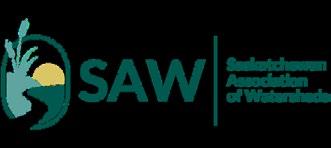

Where Water, Wellness & Communities Meet

IN THIS ISSUE:

Boost pasture health, livestock productivity, and sustainability with rotational grazing—practical steps, planning tips, and funding support inside.
Riparian eco-buffers protect water, soil, and wildlife—building climate resilience from the roots up.


AUGUST
2025
Aug. 19 - Northwest District Advisory Committee Meeting, Alice Turner Library, Saskatoon
Aug. 21 - Southeast Rotational Grazing Workshop, Glen Ewen
Aug. 22 - Floating Treatment Wetland Installation, City of Yorkton, Hopkins Lake
Aug. 27 - Northeast District Advisory Committee Meeting, Suncrest College, Nipawin
SEPTEMBER
2025
Sept. 4 - Early Adopter Field Day, Wapella
Sept. 16 - Southwest District Advisory Committee Meeting, Ponteix Cultural Centre, Ponteix
OCTOBER
2025
Oct. 15 - Southeast District Advisory Committee Meeting, Sleep Inn Regina East, Emerald Park
Oct. 22-23 - SAW Conference: From Source to Stewardship, Regina
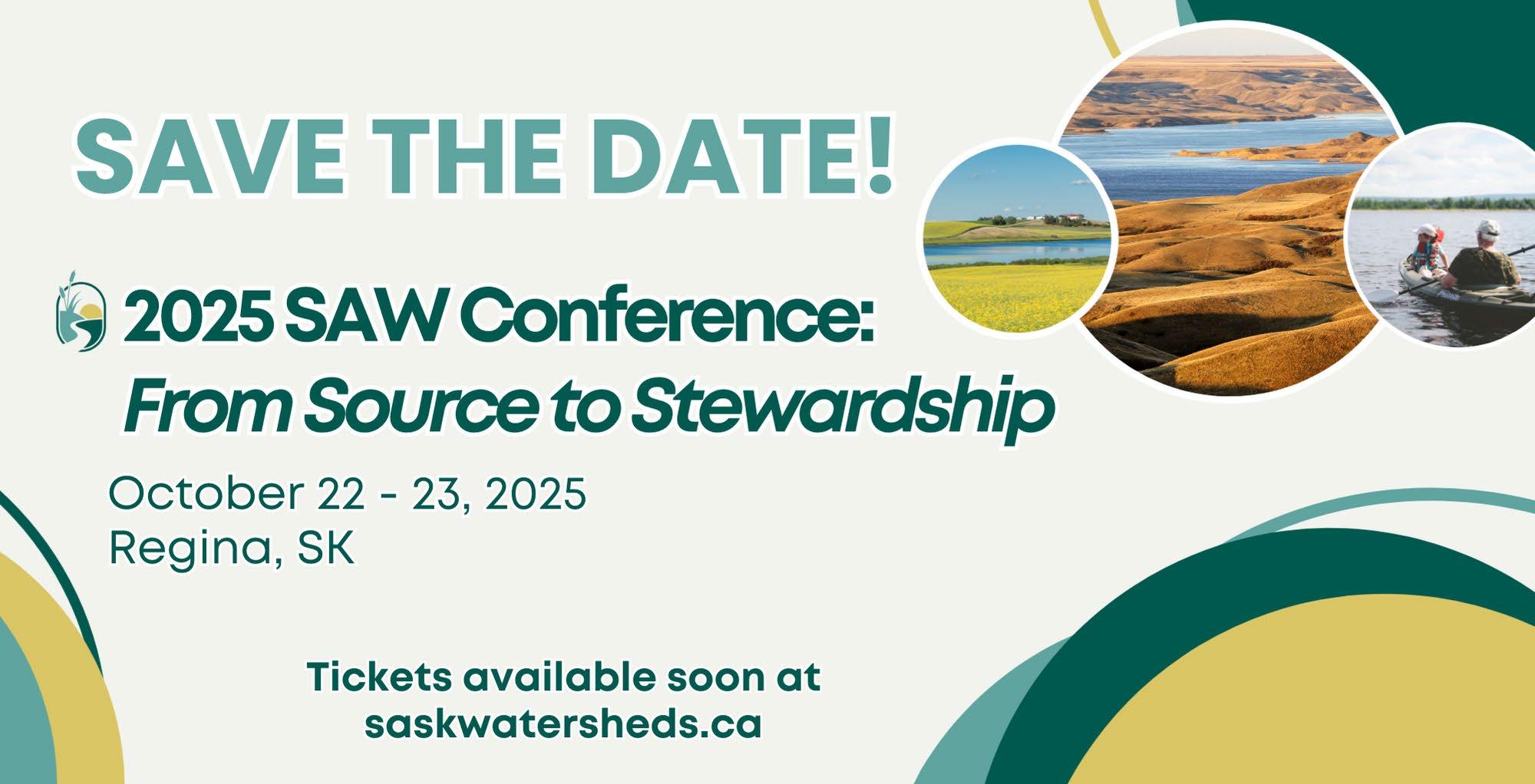
SASKATCHEWAN ASSOCIATION OF WATERSHEDS HOSTS ANNUAL GENERAL MEETING
The Saskatchewan Association of Watersheds (SAW) convened its Annual General Meeting on August 12, 2025, at the Temple Garden Event Centre. The gathering welcomed board members, stakeholders, and staff for a review of the organization’s progress and strategic direction for the 2024 fiscal year.
Leadership Reflections and Organizational Growth
SAW Chair Ruth Seime, representing the Northwest Watershed District, facilitated the meeting and delivered a presentation highlighting the organization’s expansion over the past year. SAW is currently managing 14 watershed programs and projects, with staffing levels increasing by 25%. Ruth also announced updates to the board member selection process, designed to promote diversity and ensure alignment with SAW’s strategic plan.
Program Developments and Climate Action
Executive Director Bridget Andrews provided an overview of SAW’s initiatives and internal developments throughout the fiscal year. She emphasized the Prairie Watershed Climate Program (PWCP), SAW’s largest initiative, which supports agricultural producers in reducing greenhouse gas emissions and enhancing carbon sequestration. The program promotes beneficial management practices in nitrogen management, cover cropping, and soil health. To date, over $28 million in funding has been distributed to producers. PWCP is delivered in partnership with Agriculture and Agri-Food Canada and the Manitoba Association of Watersheds.
Community Planning and Climate Adaptation
A major achievement in 2024 was the completion of drought preparedness plans for the Towns of Cabri and Hudson Bay, and the Village of Vanguard. Assisting communities with climate resilience planning remains a top priority for SAW. Additionally,
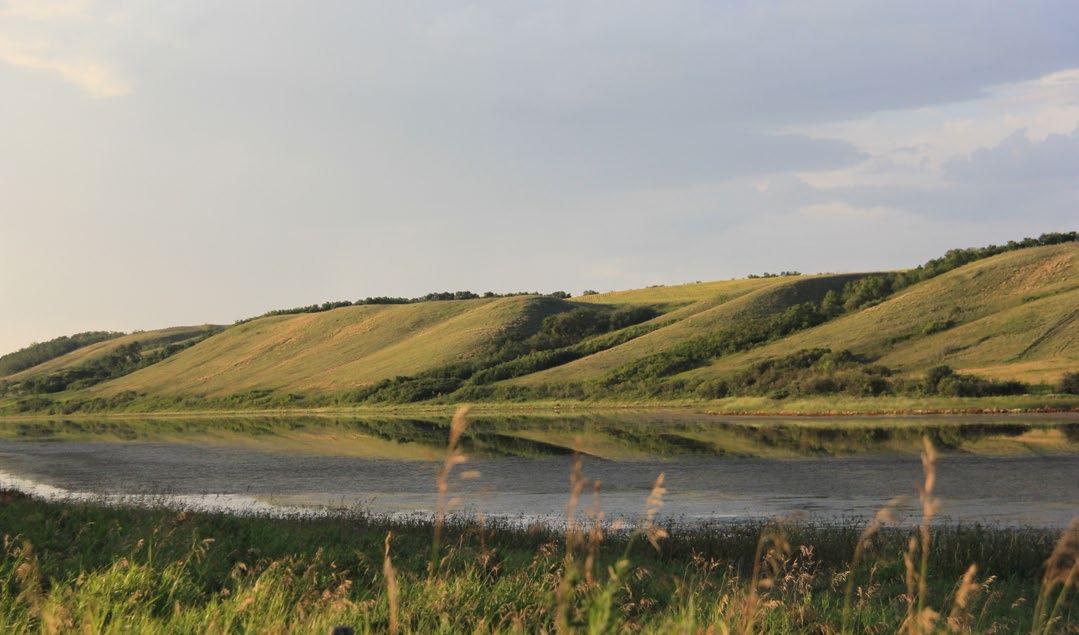


watershed climate adaptation plans were developed for the Northeast and Southeast districts. These grassroots-driven plans offer strategies to address climate variability and extreme weather events.
Farewell and Thank You, Renny Grilz, SAW Board Member
SAW extends its deepest gratitude to Renny Grilz, who retired from the SAW Board this year. As a long-serving board member and Resource Management Officer with the Meewasin Valley Authority, Renny brought invaluable insight, dedication, and leadership to our organization.
His contributions have left a lasting impact, and while his presence on the board will be truly missed, we wish Renny all the very best in his next chapter and thank him sincerely for his years of service.
To learn more about SAW’s ongoing programs and initiatives, please click the link below.

Renny Grilz & Ruth Seime at the SAW Annual General Meeting

ECO-BUFFER SHELTERBELTS: NORTH SASKATCHEWAN RIVER WATERSHED

In the North Saskatchewan River Watershed, the establishment of riparian eco-buffers will bring long-term benefits to the land by improving water quality. Riparian vegetation will support long-term soil health by reducing wind and water erosion while increasing soil water infiltration and storage. Dense underground root networks will improve stream bank stability and provide a home for microbial populations, which promote the breakdown of dead organic matter as well as agricultural runoff into molecules that can be used by plants. When incorporated into agricultural landscapes, riparian eco-buffers will play a key role in developing resiliency to climate extremes and variability in future years.
Riparian buffers also work belowground to improve water quality. As plants mature and extend their roots into the soil, they stabilize the ground. Root networks hold the soil in place, preventing losses from erosion. Root networks also foster diverse communities of microbial life that provide ecosystem services. Microbes in the soil
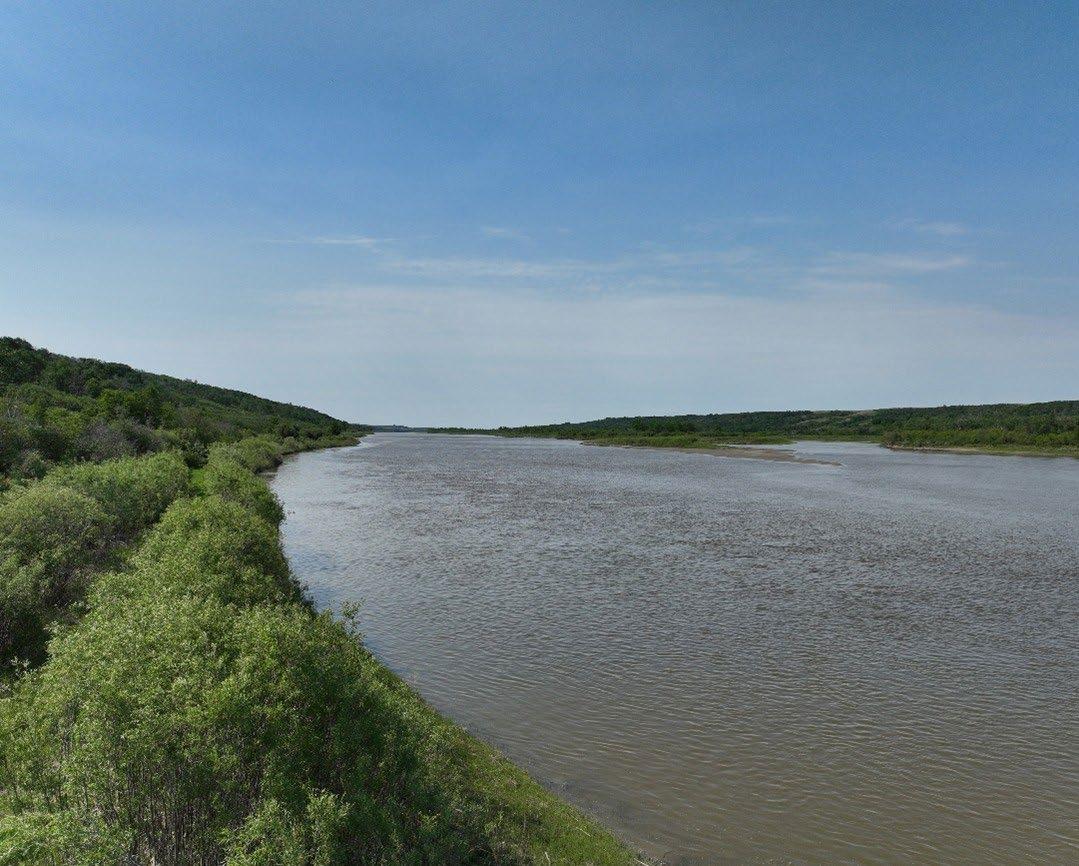

beneath riparian vegetation can convert nutrients and chemicals into molecules that plants can use, preventing the contamination of freshwater.
Above the soil surface, riparian vegetation acts as a physical buffer to runoff that may contain sediments and chemicals. Plants reduce the speed of water flowing overground during spring runoff or heavy rain events. Water that moves slower spends more time in contact with the soil surface and better at infiltrating dry soil. This water is stored in the soil as groundwater, which remains available for later plant use.
Fast-flowing water contributes to the erosion of the surface layer of soil by picking up soil particles as it moves across the surface. By slowing the rate of water flow, aboveground vegetation prevents sediment from being transported across the landscape and deposited downstream. Riparian vegetation, particularly trees and taller shrubs and forbs, also reduces wind erosion. These plants act as a wind break, reducing wind speeds and limiting the amount and size of soil particles that can be carried by the wind. They also physically stop the movement of windborne soil particles, preventing soil and sediment from building up in waterbodies. The deposition of sediment over time can significantly alter bank slope, water depth, turbidity, and other factors that influence water quality.
This fall SAW will begin the implementation of five additional eco-buffer shelterbelt sites in the North Saskatchewan River Watershed. In September, SAW will host a youth workshop at Glenburn Regional Park. If you have any questions about the project, email info@saskwatersheds.ca or phone 306-541-9902.

HABITAT ENHANCEMENT AND RESTORATION FOR BIGMOUTH BUFFALO (SASKATCHEWAN-NELSON RIVER POPULATION) AND PLAINS
Invasive species are non-native plants, animals, or microorganisms that have been introduced—either intentionally or accidentally—into ecosystems where they do not naturally occur. In aquatic environments, these invaders can disrupt the ecosystem that native fish rely on for survival and reproduction, often leading to long-term declines in biodiversity and habitat quality.
A notable example is the Common Carp (Cyprinus carpio), a species introduced into Saskatchewan’s waters in the 1950s. Their feeding habits and preferred habitats closely overlap with those of the native and threatened Bigmouth Buffalo (Ictiobus cyprinellus) Saskatchewan-Nelson River population. Unlike the Bigmouth Buffalo, Carp are highly prolific and grow quickly, giving them a competitive edge when it comes to accessing food and space. This competition puts additional pressure on an already vulnerable species.
Another concern is the spread of zebra mussels (Dreissena polymorpha), an invasive mollusk that, while not directly competing with or preying on native fish, can significantly alter aquatic ecosystems. Zebra mussels filter large amounts of plankton from the water, disrupting food webs and changing water clarity and quality. These changes can have indirect but serious consequences for species like the Bigmouth Buffalo, which depend on stable environmental conditions for feeding and reproduction.
Effectively managing invasive species is critical to protecting freshwater ecosystems and the native species they support. Prevention remains the most effective strategy—raising public awareness, cleaning boats and gear, and monitoring water bodies
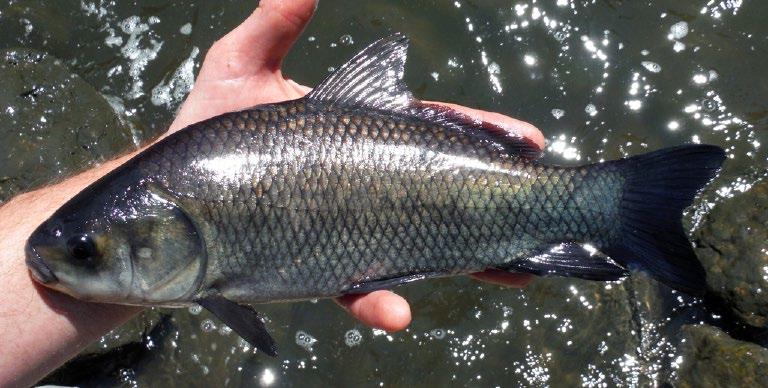
SUCKER (MILK RIVER)


can help stop new invasions before they begin. At the same time, restoring and maintaining healthy aquatic and riparian habitats is key to building resilience against the spread of invasive species.
With support from Fisheries and Oceans Canada, the Saskatchewan Association of Watersheds (SAW) is undertaking a variety of habitat enhancement and restoration projects. These include fish distribution surveying, riparian tree plantings and the installation of rock riffles to improve water flow and fish habitat. These efforts play a vital role in conserving native fish populations, protecting biodiversity, and improving overall ecosystem health. Beginning in July, SAW will work with landowners in the Qu’Appelle Watersheds to implement six riparian area habitat enhancement sites via the planting of native vegetation and three off-site livestock watering and fencing projects. SAW will also implement a rock riffle for Plains Sucker (Pantosteus jordani) in the Milk River Watershed.
For more information click on the link below or contact us at info@saskwatersheds.ca or call 306-541-9902.



Bigmouth Buffalo, Gary Swaresty (www.roughfish.com)

ALUS-SAW CARROT RIVER WATERSHED FIELD TOUR
On Wednesday, August 14, 2025 the ALUS-SAW Carrot River Watershed Community hosted a field tour showcasing an example of our 2025 projects. Approximately 35 participants joined the tour. The day began with a tour at Rock Creek Ranching, owned and operated by Jordan Newhouse from Love, SK where we toured a pasture rejuvenation project that showcased broadcast seeding via a drone. A presentation in the field was given by Charlotte Ward, PAg, where she discussed the benefits of pasture rejuvenation and the challenges that producers may face when establishing a viable stand. We returned to White Fox Community Hall for lunch and presentations from the Ministry of Agriculture where they shared information about the programming that is available to producers. There was also a presentation from the Saskatchewan Association of Watersheds discussing the programming that they offer to producers.
Our next tour stop was at Sharko Land and Livestock owned and operated by Ed, Travis and Jill Sharko from Carrot River, SK. We toured an ALUS project that showed us the comparison between a Full Season cover crop blend versus a Warm Season Cover crop blend. From there, we then toured their second ALUS project which was a corn and forage soybean intercrop. Tour participants engaged in conversation about the benefits of both projects, challenges that were faced and what could be done to make improvements to each project.
The ALUS-SAW Carrot River Watershed Community offers a funding program that is a payment-for-ecosystem services model which allows society to recognize the benefits which are provided to nature because of the stewardship of farmers and ranchers.
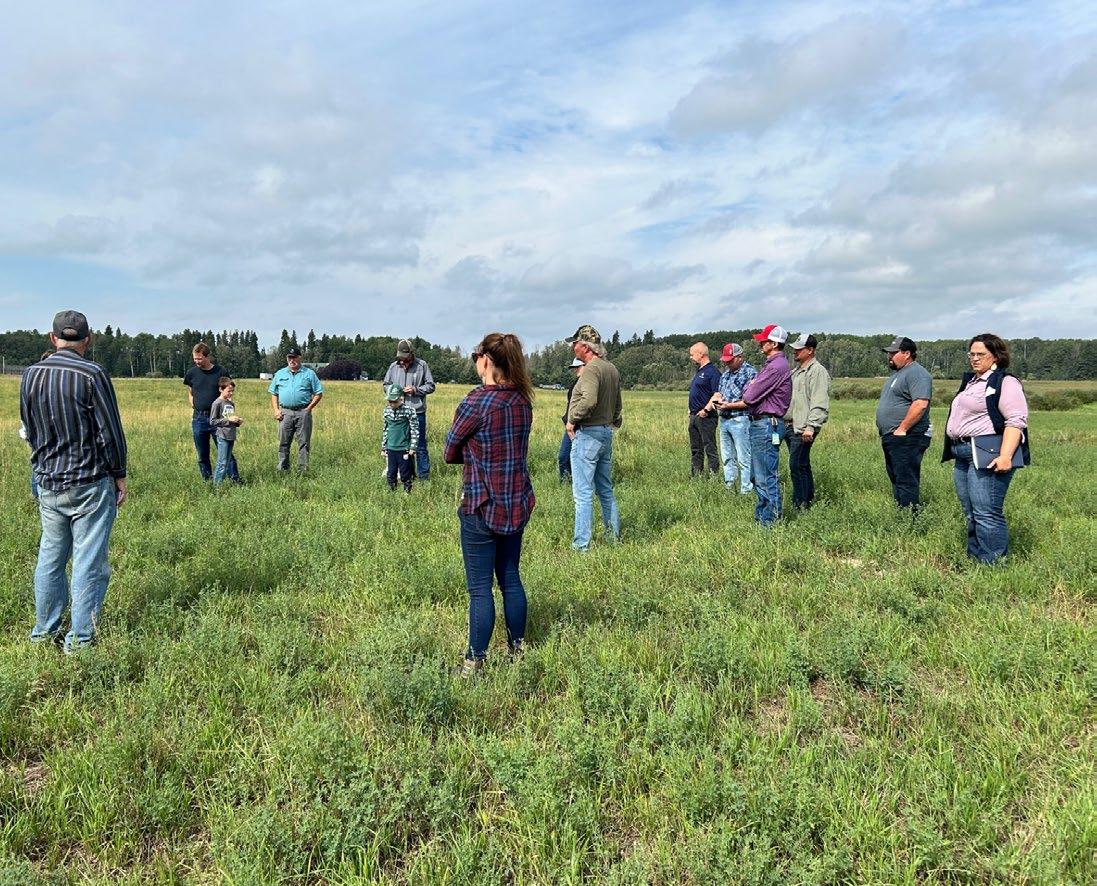

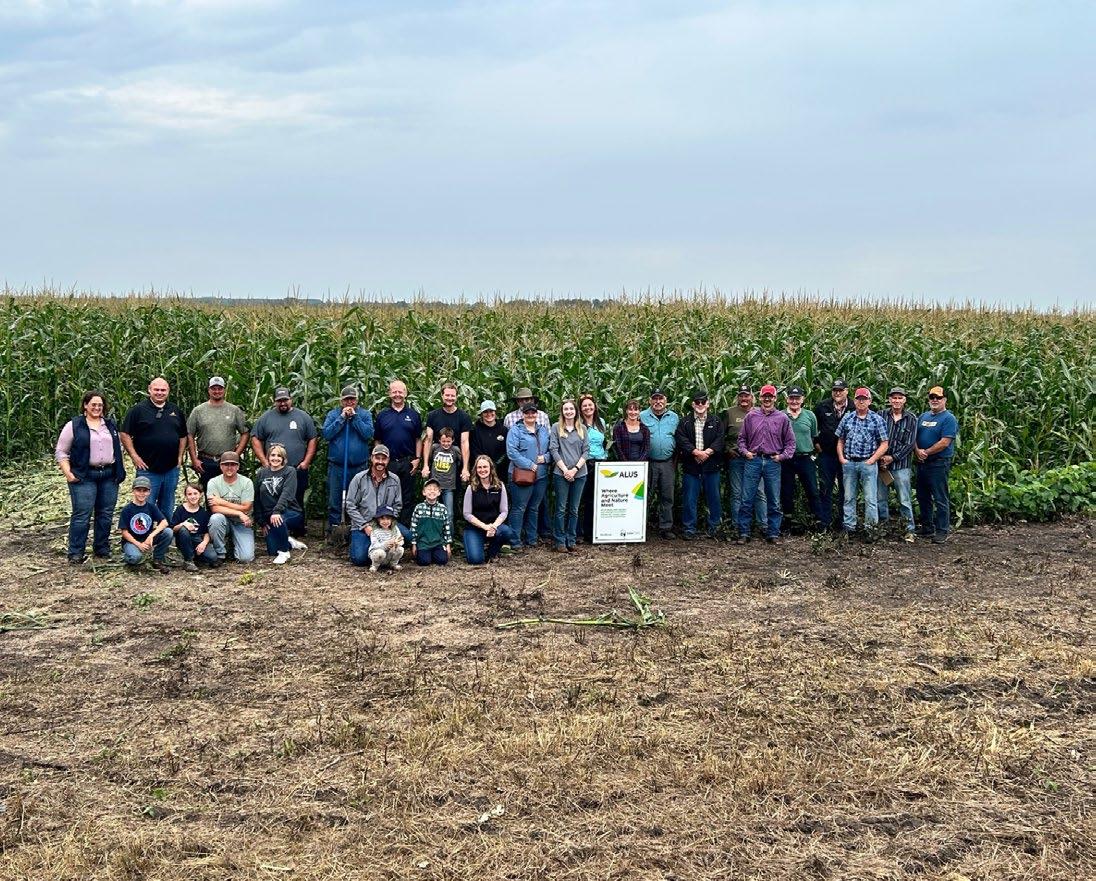
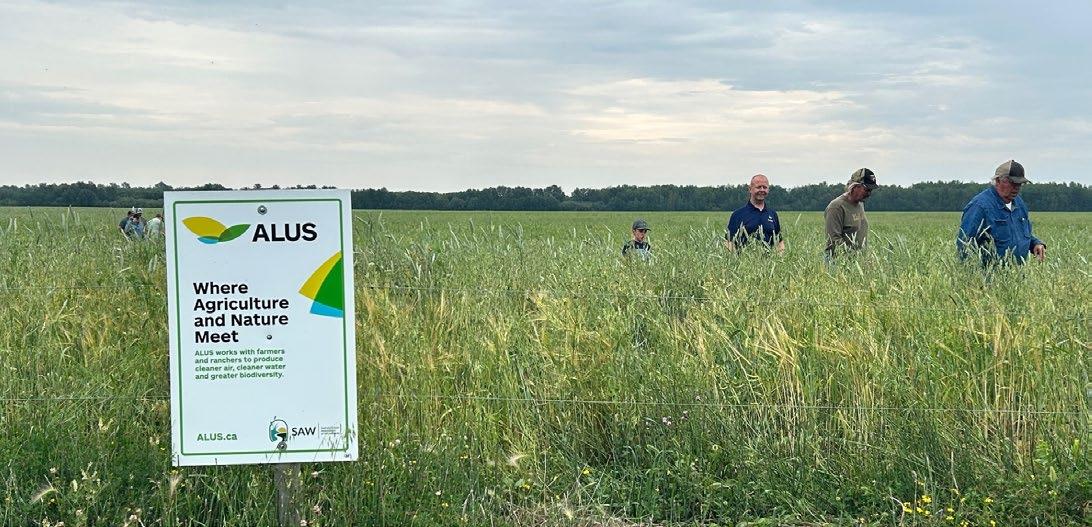
Farmers and ranchers are stewards of the land, and they are making decisions daily that benefit the environment, their communities, and future generations. They are paid for the additional ecosystem services produced because of their management change via cost-shared establishment expenses and annual payments.
The goal of the ALUS-SAW Carrot River Watershed Community is to help farmers and ranchers develop projects that generate ecosystem services and build economic and environmental resilience. Outcomes generated by these projects will include improved water quality and quantity through the implementation of buffer strips and wetland enhancements, invasive weed control, improved riparian health and the addition of wildlife habitat for waterfowl and pollinators.
In 2025, the program is fully allocated with funding implemented for 1 perennial forage conversion projects, 4 exclusion fencing projects and 11 Growing Roots projects and 3 tree planting/ shelterbelt projects. There is a total of 10 new participants and 5 returning participants. There is approximately 1264 acres enrolled in the program in 2025.

KEEPING AQUATIC INVASIVE SPECIES OUT OF SASKATCHEWAN WATERS
As Saskatchewan’s lakes and rivers come alive with the arrival of summer, so too does the risk of aquatic invasive species. Invasive zebra and quagga mussels, though small in size, pose a serious threat to our ecosystems, infrastructure, and economy. Once these mussels become established in a waterbody, they are nearly impossible to eliminate. With water-based recreation now in full swing, staying vigilant is more important than ever to protect the health of our waterways.
To stay ahead of the threat, SAW has partnered with the Saskatchewan Fish and Wildlife Development Fund and the Water Security Agency to monitor more than 60 lakes across the province this summer. SAW’s team will be collecting water samples throughout the season to test for veligers, the microscopic and free-swimming larval stage of mussels. Veligers are not visible to the naked eye but detecting them early is our best chance to prevent an outbreak before adult mussels take hold.
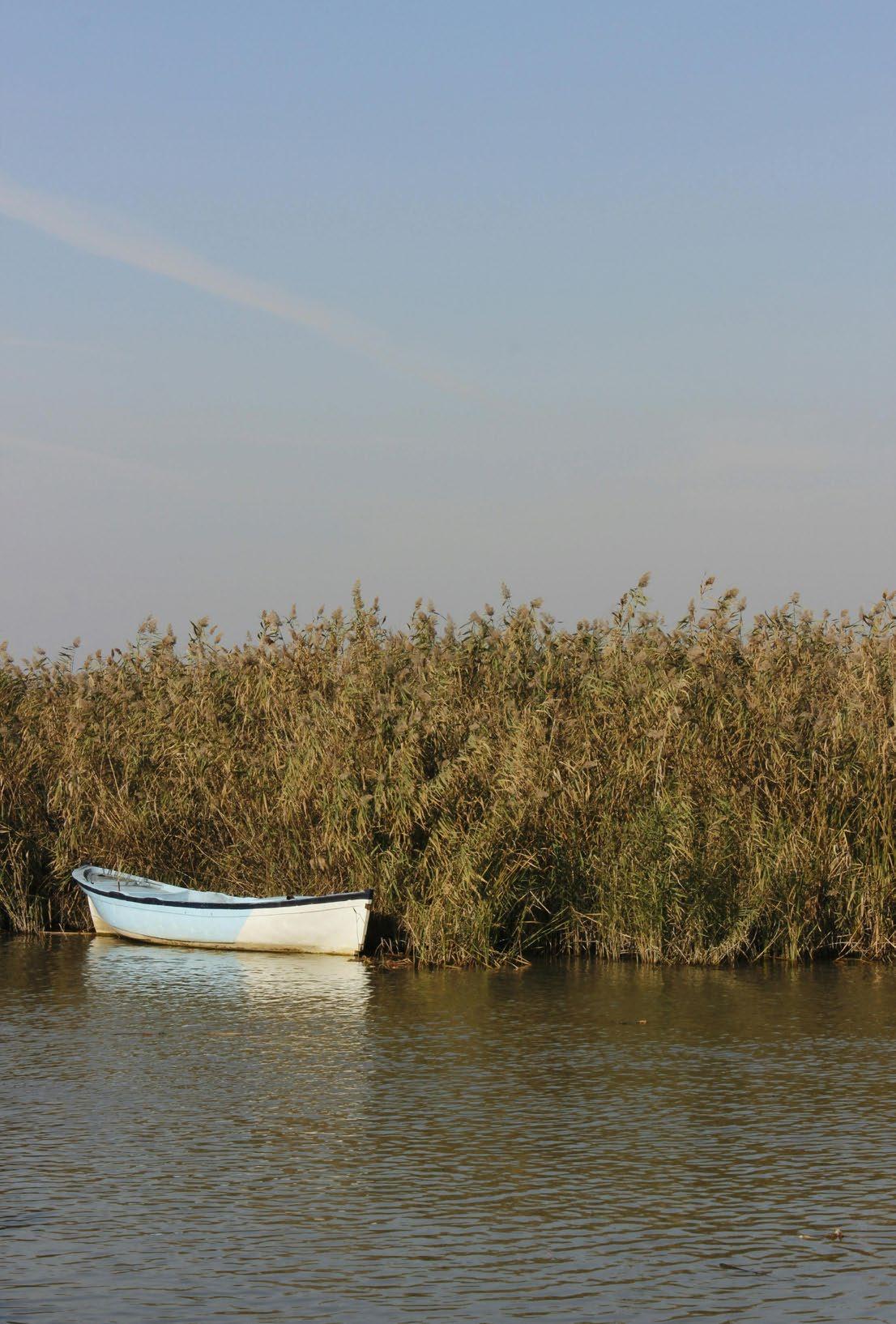

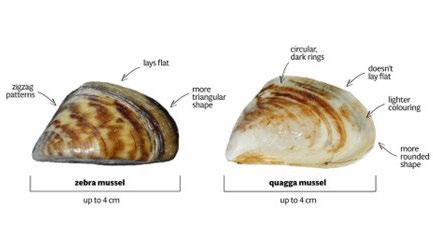
Source: invasivespeciescentre.ca
Zebra and quagga mussels are native to southeastern Europe and are believed to have arrived in North America in the late 1980s through the release of ballast water by ships in the Great Lakes. Since then, they’ve rapidly spread across the continent by attaching to boats, trailers, and equipment. Zebra mussels have already been found in neighboring provinces and states, such as Ontario, Manitoba and North Dakota, making prevention in Saskatchewan more important than ever.
These invasive mussels pose a serious threat to our freshwater ecosystems. They feed aggressively on plankton, removing vital food sources for native aquatic species. They also attach to native mussels, weakening or killing them, and can overrun important spawning habitats for fish. For humans, the impacts are just as severe as mussels clog water intake pipes, encrust boats and docks, and can even damage motors.
The good news is that everyone can help protect Saskatchewan’s waters. Preventing the spread of zebra and quagga mussels starts with a few simple steps. Always clean, drain, and dry your boat, trailer, and any gear that comes into contact with water, including fishing lines, buckets, nets, and water toys. This is especially important before moving to a new lake or river. The Saskatchewan Ministry of Environment is working hard to prevent invasive mussels from entering Saskatchewan waters. For more information on zebra and quagga mussels, please click the link below.


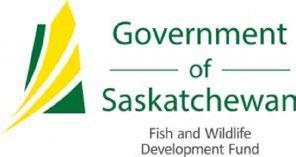

ROTATIONAL GRAZING: BENEFITS AND PROGRAMMING OPPORTUNITIES
Why Rotational Grazing?
Rotational grazing is a Beneficial Management Practice (BMP) that ranchers can adopt to improve pasture health, livestock productivity, and environmental sustainability. A successful grazing plan is built on four core principles:
• Balancing forage supply with livestock demand
• Distributing grazing pressure across paddocks
• Allowing planned recovery for plant regeneration
• Avoiding grazing during sensitive periods
By applying these principles, producers can enhance pasture productivity, improve soil health, and support long-term sustainability on their ranches.
Getting Started: Resource Inventory
The first step in developing a grazing management plan is conducting a thorough resource inventory. This includes:
• Mapping your land base
• Identifying fencing and water infrastructure
• Assessing forage availability, quality, and timing
Understanding the types of forage—whether native grasslands, tame pastures, annual seeded forages, or crop residues—is essential, as each has different optimal grazing windows. Water access also plays a critical role in determining grazing timing and paddock layout.
Planning and Implementation
Using your inventory, you can begin to map out a grazing schedule: when, where, and for how long cattle will graze. Paddock systems vary widely depending on land base, forage type, soil conditions, and other variables. Historical grazing patterns can serve as a helpful guide when designing or refining a rotational system.
Transitioning from continuous grazing to a single cross-fenced paddock system can have a significant impact by allowing for planned rest periods. From there, producers can expand to more complex systems based on their operational needs.
Feasibility and Flexibility
Before implementation, it’s important to assess the financial feasibility of your plan. Consider:
• Permanent vs. temporary fencing
• Water infrastructure costs
• Long-term maintenance and scalability
Most grazing plans are phased in over several years, adapting as resources become available. Flexibility is key—plans must respond to changing forage conditions and climate variability.

Monitoring and Adaptation
Monitoring is essential to ensure your grazing plan meets its goals. Factors such as seasonal moisture, herd size, and forage availability can all influence outcomes. Keeping detailed records allows for informed adjustments and continuous improvement over time.
Support Through SWEAP
The Saskatchewan Association of Watersheds (SAW) offers support through the Saskatchewan Watersheds Environmental Agriculture Program (SWEAP). Professional Agrologists are available to help producers develop rotational grazing plans under the Rotational Grazing BMP. Additionally, hosts in person workshop in each district annually focusing on Rotational Grazing upcoming events include a Rotational Grazing Workshop at Glen Ewen on Aug 21, an Early Adopter Field Day at Wapella on Sept 4 and Rotational Grazing Workshops to be held in the Southwest and Northwest districts in the winter.
The SWEAP program provides rebates for fencing infrastructure, watering systems, and pasture composition improvements. Funding is provided in part by Agriculture and Agri-Food Canada through the Agricultural Climate Solutions – On-Farm Climate Action Fund.

Rotational Grazing in Action at the Andreas Farm Field Day on August 6th.
SASKATCHEWAN LAKES: CLIMATE-BASED EXTREMES AND
VARIABILITY
Many Saskatchewan lakes are replenished annually via spring or precipitation runoff, glacial meltwater, or temporary groundwater springs, and are highly susceptible to climatebased extremes, such as drought and flooding events. During a hydrological drought, water replenishment rates decrease and lake levels lower. This can leave community water intakes high and dry, while limiting water availability for other users. Conversely, during a flood event, massive surges of water moving into a lake can destroy lake property infrastructure, water control structures, and habitat.
To address extreme events, lake communities should develop emergency response plans for droughts and floods, especially if the community uses lake water for domestic purposes or is in an area susceptible to flooding. Emergency response plans are a proactive strategy to prepare for extreme events such as droughts and flooding and will become increasingly important as extreme events associated with climate variability and extreme events become more frequent and severe.
Emergency response plans should provide citizens with information to make them resilient as possible in time of emergency, and outline: an emergency response committee and coordinator, baseline water consumption amounts, water rationing guidelines during drought, and barrier placement or emergency evacuation guidelines and protocol during floods. Additionally, lake communities should develop general water use guidelines and educational material to inform residents on how to save water, enabling them to be more resilient to climate variability and extreme events.
This fall, SAW will implement four shoreline habitat enhancement restoration sites at Jackfish and Murray Lakes within the North Saskatchewan River Watershed. These sites will help act as buffers against erosion, stabilize the shoreline, provide flood mitigation, enhance biodiversity, and improve ecosystem services.
For more information about SAW’s Stewardship on the Shoreline (SOS) project, please email info@saskwatersheds.ca or call (306) 541-9902.


Our office locations are open Monday to Friday from 9 AM to 4 PM (closed 12 PM - 1 PM).
HEAD OFFICE
300B - 99 Diefenbaker Dr., Moose Jaw, SK
SOUTHWEST DISTRICT OFFICE
1 Airport Road, Swift Current, SK
MAILING ADDRESS
Box 1177, Moose Jaw, SK, S6H 4P9

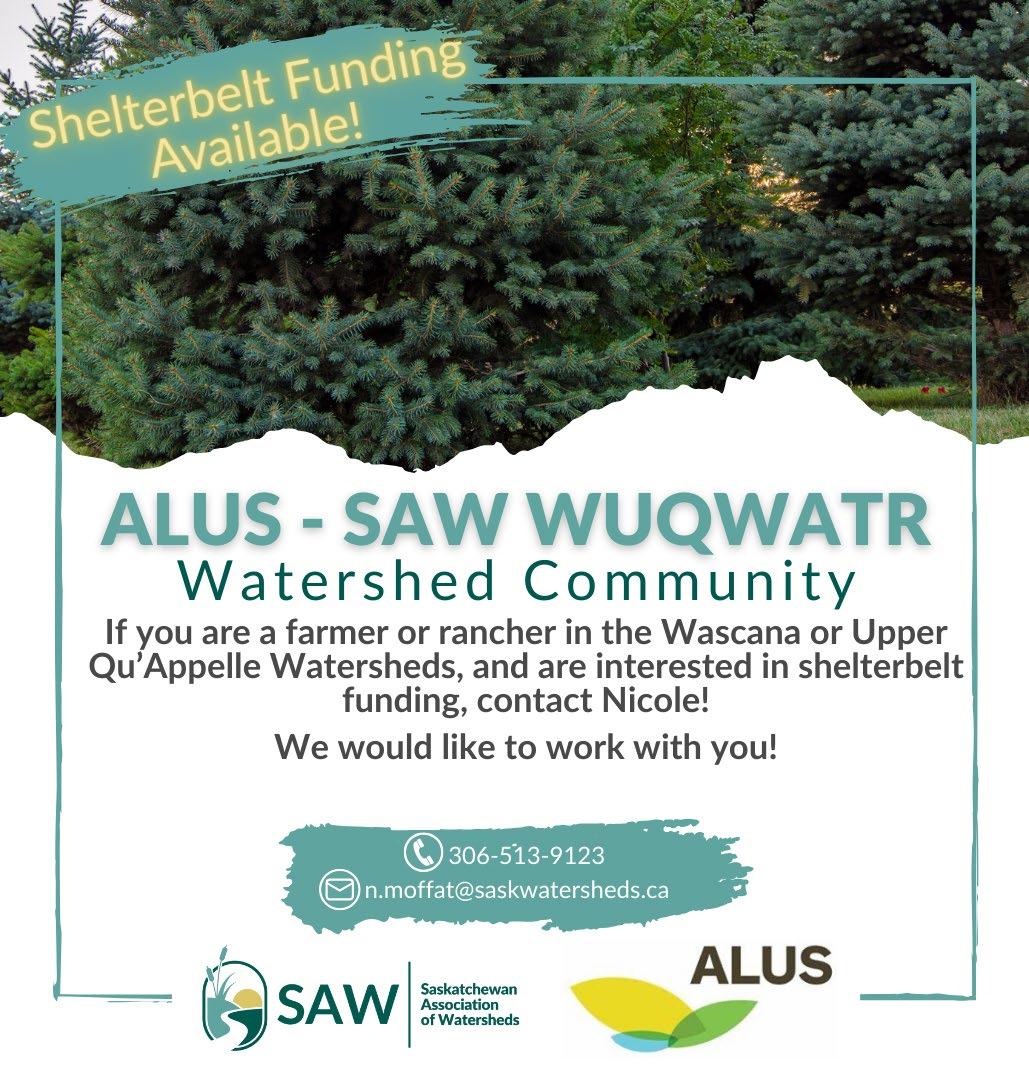

SWEAP Early Adopter Field Day
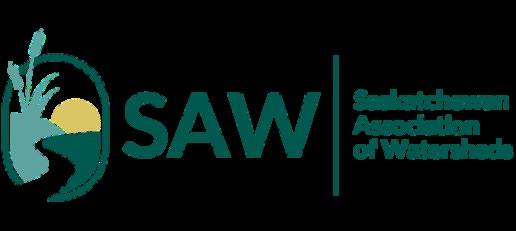
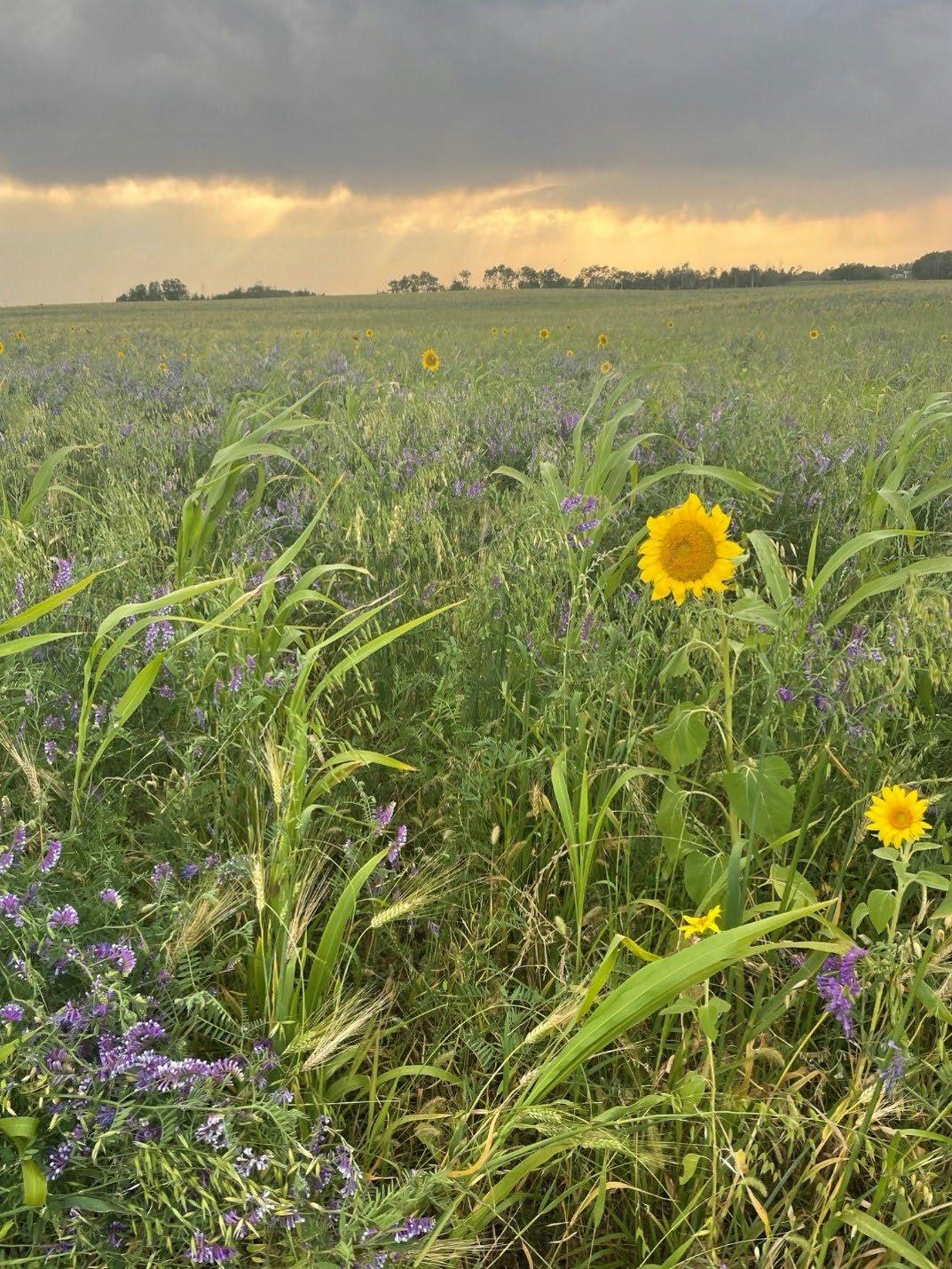
Join SAW to see cover crops in action at Adam and Darla Knutson's ranch near Wapella, SK.
-
- Welcome & Land Acknowledgement
- SAW Programs & Projects Overview
- Cover Crop Research - Lessons Learned
- Drone Seeding & Managing Marginal Acres
- Lunch
- Farmer Introduction - Field Tour at the Knutson’s Farm
- Closing Remarks
4 SEPTEMBER 2025
WAPELLA RINK, 216 6TH AVE. N, WAPELLA, SK 10:00 AM - 3:00 PM
For more information: 306-541-9902 FREE REGISTRATION!
